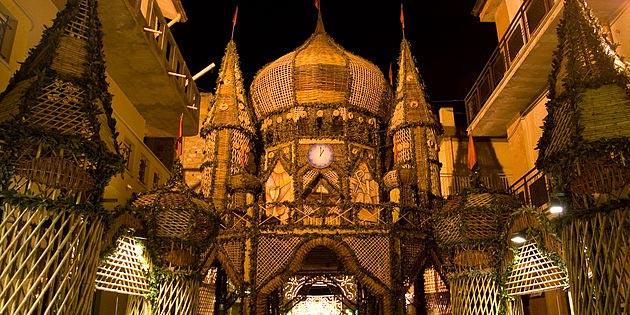Origin and symbols of the Easter Arches in San Biagio Platani

Carlo Columba - CC2.5
The Easter arches of San Biagio Platani have their origins in the seventeenth century.
The Easter Arches are monumental vegetable arches, whose height can reach thirteen metres, made with reeds, agaves, willows, orange trees, laurel, rosemary and palm branches, and decorated with sculptures of bread, which are set up every year on the occasion of Easter in San Biagio Platani.
The tradition of setting up these splendid arches was born in the second half of the seventeenth century when the two brotherhoods of the Madunnara, which had its headquarters in the Mother Church, and of the Signurara, which had its headquarters in the Carmine Church, took care to artistically delimit the sacred space in which, on Easter, the encounter between simulacra of the Risen Christ and the Madonna would take place.
Symbolically these triumphal arches celebrate the triumph of life over death, the victory of Christ, but at the same time they represent the awakening of nature with the arrival of spring. The structure of these arches is in fact created by the fusion of different plant materials that celebrate the awakening of nature with their colors and smells.
The Easter arches create a monumental scenography along the main street of San Biagio Platani to which it is linked an important symbolic meaning: the arches are arranged in such a way as to reproduce a church. The main facade, the long central nave with many lateral arches, and the apse are reproduced.
These splendid structures are decorated with artistic bread sculptures, which become a symbol of the rhythms of life in a people as the result of hard work in the fields. To further enrich these monumental works are the nimpe, i.e. artistic chandeliers decorated with a mix of dates, flowers and twigs of various kinds, and the mosaics made of almonds, ears, maize, dates, flowers and legumes.